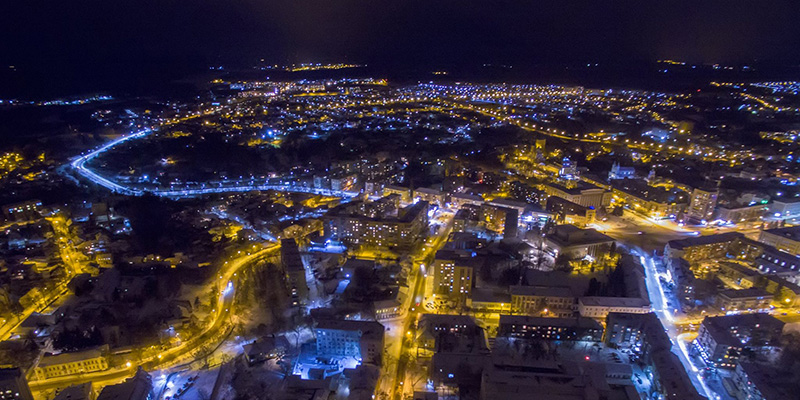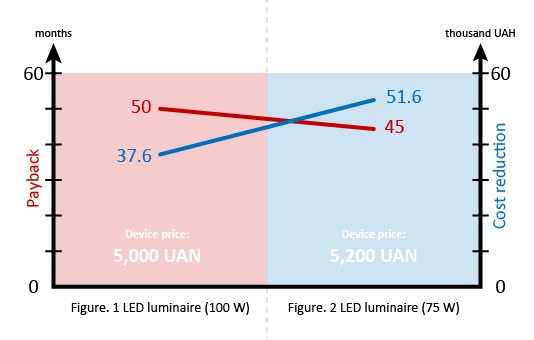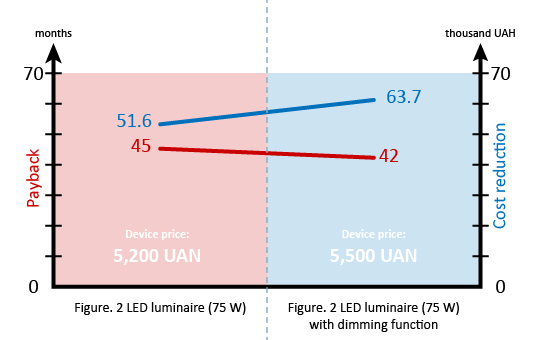
Imagine in 3.5 years after the lighting reequipment you will manage to reduce costs by 63 thousand UAH per year. It’s absolutely real! And in this article, you will learn how to do it.
In October 2016, SEF – International Forum of Sustainable Energy was held in Kyiv. A lot of issues, regarding energy efficiency and possible ways of energy saving, were discussed by the experts. EKTA’s specialists gave a talk on additional, unobvious, and commonly overlooked by the potential customer, ways of cost reduction. The report places greater focus on the importance of the design approach as well as on the flexibility of solutions while executing the LED lighting project.
INEFFECTIVE MANAGEMENT
Today, we face the problem of the customer’s casual attitude to the choice of lighting equipment. The only criterion – luminaire’s wattage, is considered to be decisive. We do not claim that this factor should not be taken into account, but just want to emphasize that the lighting fixture with a power consumption, for example – 50 W, cannot be a universal solution for ensuring proper regulatory city lighting for streets with different width and traffic density. Despite the fact that the luminaire choice, based only on the wattage, is the simplest way to implement, it does not factor the geometry and the category of the illuminated roads or industrial areas. As a consequence, LED luminaires either do not provide the required level of illumination, or are even redundant in terms of efficiency and, accordingly – more energy-consuming.
HOW TO MAKE YOUR LED LIGHTING PROJECT EFFECTIVE AND EFFICIENT?
In-depth project planning with due regard to the device’s illuminating parameters – is the right way to solve the problem of improper lighting system reequipment. Thus, using photometric data files (IES) and a free outdoor/indoor lighting calculation program, for example - DiaLux, the customer can select the optimal lighting equipment for his operating conditions, while ensuring the required quality of lighting. Such an approach allows reducing further energy costs considerably.
The calculations of economic indicators after gas discharge sodium lamp replacement with the LED luminaires are shown in the graph below. Figure 1 presents an economic index of the luminaire, chosen without regard to its light distribution diagram. The target aim here is the minimum cost of the lighting device and provision of an average illumination level – 12 lm. Figure 2 shows the performance of an LED lighting fixture, selected on the base of the device’s illuminating parameters and design features. As can be seen from the graph, when designing for a specific customized operating condition (Fig. 2), a 75W luminaire is an optimal solution; its full cost recovery is much faster, despite the fact that the cost of the device in Fig. 2 is higher than the cost of the device in Fig. 1.

ACHIEVE PERFECTION IN WHAT IS DIMMING LUMINAIRE CONTROL?
In the context of lighting, dimming – is the process of luminaire’s brightness reduction and, therefore, power consumption control. Thus, the level of object illumination can vary depending on the daytime, traffic density or technological cycles at the industrial areas. The dimming can be carried out in automatic mode or caused by external control signals. LED luminaires, integrated with the dimming control system, a flexible tool, allowing multiple changes in brightness, without loss of efficiency and resource reduction. Moreover, if compared to the non-controllable lighting systems, they ensure marked cost reduction.

CAN-DO APPROACH
Today the customer becomes more knowledgeable and seeks to buy advanced high-quality products, which can provide total road safety with high efficiency. After the forum, the newly-developed LED lighting control system caused particular interest among potential customers. The solution allows significantly reducing energy costs and making a step towards the implementation of Smart City projects.
The performed calculations showed that the increase of the luminaire’s cost due to its integration with the lighting control system does not significantly lengthen the payback period of the lighting project, providing a significant cost reduction and giving the possibility of luminaire integration with other technological networks in the long term.
